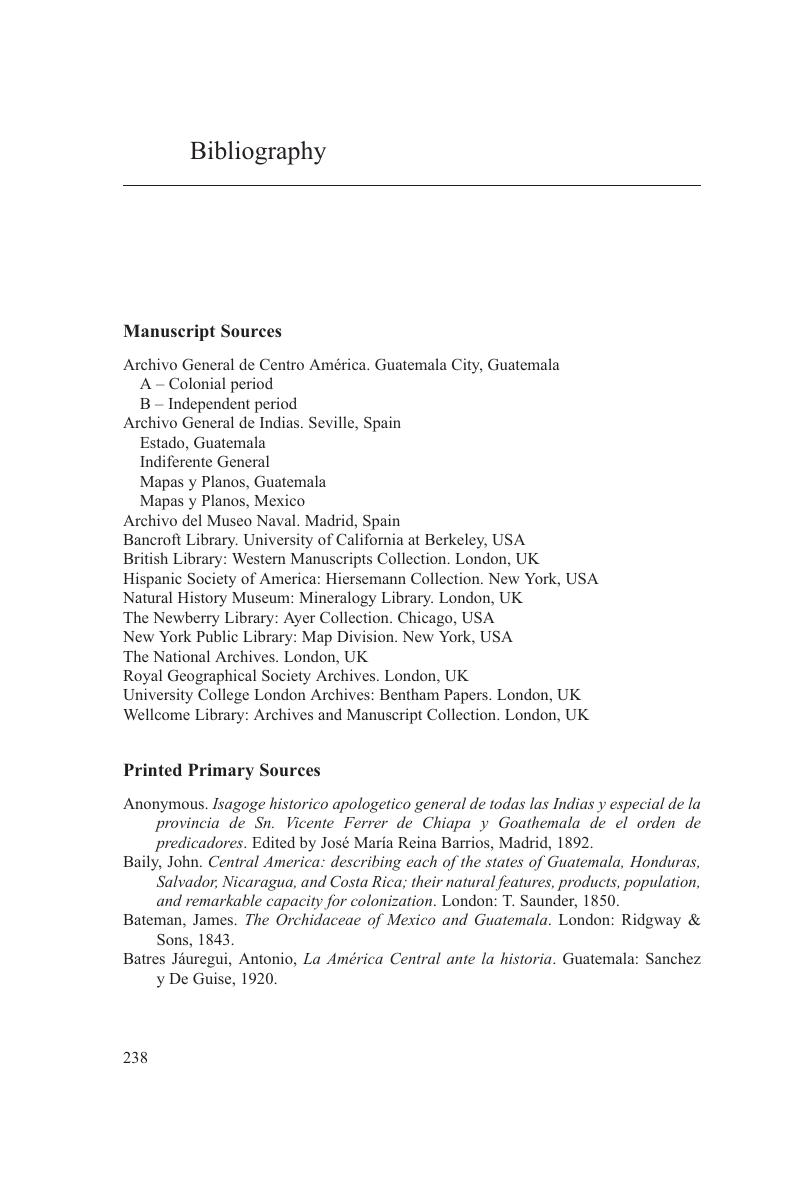 The Science of Useful Nature in Central America
The Science of Useful Nature in Central America Book contents
- The Science of Useful Nature in Central America
- The Science of Useful Nature in Central America
- Copyright page
- Dedication
- Contents
- Figures
- Acknowledgements
- Notes on Translations and Names
- Abbreviations and Acronyms
- Additional material
- Introduction: A Kingdom of Vast Extension
- 1 Landscape, Ruins, and Governance
- 2 Networks of Knowledge and Action
- 3 Making Enlightenment Local
- 4 Useful Geography in Practice
- 5 Transforming Environments
- 6 Independence and Useful Nature
- Conclusions
- Glossary of Colonial Administrative Terms
- Bibliography
- Index
- References
Bibliography
Published online by Cambridge University Press: 27 August 2020
- The Science of Useful Nature in Central America
- The Science of Useful Nature in Central America
- Copyright page
- Dedication
- Contents
- Figures
- Acknowledgements
- Notes on Translations and Names
- Abbreviations and Acronyms
- Additional material
- Introduction: A Kingdom of Vast Extension
- 1 Landscape, Ruins, and Governance
- 2 Networks of Knowledge and Action
- 3 Making Enlightenment Local
- 4 Useful Geography in Practice
- 5 Transforming Environments
- 6 Independence and Useful Nature
- Conclusions
- Glossary of Colonial Administrative Terms
- Bibliography
- Index
- References
Summary

- Type
- Chapter
- Information
- The Science of Useful Nature in Central AmericaLandscapes, Networks and Practical Enlightenment, 1784–1838, pp. 238 - 261Publisher: Cambridge University PressPrint publication year: 2020


